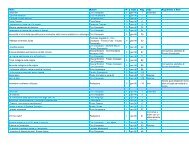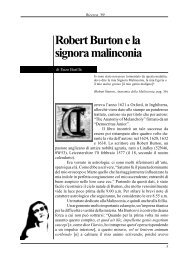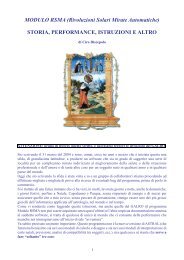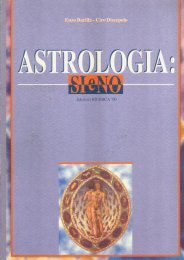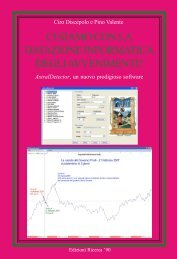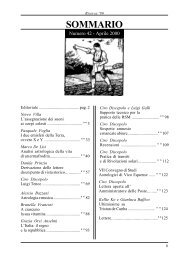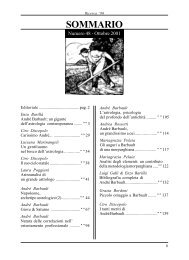Programming interface to the Swiss Ephemeris - programmiastral.com
Programming interface to the Swiss Ephemeris - programmiastral.com
Programming interface to the Swiss Ephemeris - programmiastral.com
Create successful ePaper yourself
Turn your PDF publications into a flip-book with our unique Google optimized e-Paper software.
* get tidal acceleration used in swe_deltat() */<br />
swe_get_tid_acc();<br />
/* set tidal acceleration <strong>to</strong> be used in swe_deltat() */<br />
swe_set_tid_acc();<br />
Initialization, setup, and closing functions<br />
/* set direc<strong>to</strong>ry path of ephemeris files */<br />
swe_set_ephe_path();<br />
/* set name of JPL ephemeris file */<br />
swe_set_jpl_file();<br />
/* close <strong>Swiss</strong> <strong>Ephemeris</strong> */<br />
swe_close();<br />
House calculation<br />
/* sidereal time */<br />
swe_sidtime();<br />
/* house cusps, ascendant, MC, armc, vertex */<br />
swe_houses();<br />
Auxiliary functions<br />
/* coordinate transformation, from ecliptic <strong>to</strong> equa<strong>to</strong>r or vice -versa. */<br />
swe_cotrans();<br />
/* coordinate transformation of position and speed,<br />
* from ecliptic <strong>to</strong> equa<strong>to</strong>r or vice-versa*/<br />
swe_cotrans_sp();<br />
/* get <strong>the</strong> name of a planet */<br />
swe_get_planet_name();<br />
/* normalization of any degree number <strong>to</strong> <strong>the</strong> range 0 ... 360 */<br />
swe_degnorm();<br />
O<strong>the</strong>r functions that may be useful<br />
PLACALC, <strong>the</strong> predecessor of SWISSEPH, included several functions that we do not need for SWISSEPH<br />
anymore. Never<strong>the</strong>less we include <strong>the</strong>m again in our DLL, because some users of our software may have taken<br />
<strong>the</strong>m over and use <strong>the</strong>m in <strong>the</strong>ir applications. However, we gave <strong>the</strong>m new names that were more consistent with<br />
SWISSEPH.<br />
PLACALC used angular measurements in centiseconds a lot; a centisecond is 1/100 of an arc second. The C type<br />
CSEC or centisec is a 32-bit integer. CSEC was used because calculation with integer variables was considerably<br />
faster than floating point calculation on most CPUs in 1988, when PLACALC was written.<br />
In <strong>the</strong> <strong>Swiss</strong> <strong>Ephemeris</strong> we have dropped <strong>the</strong> use of centiseconds and use double (64-bit floating point) for all<br />
angular measurements.<br />
/* normalize argument in<strong>to</strong> interval [0..DEG360]<br />
* former function name: csnorm() */<br />
swe_csnorm();



